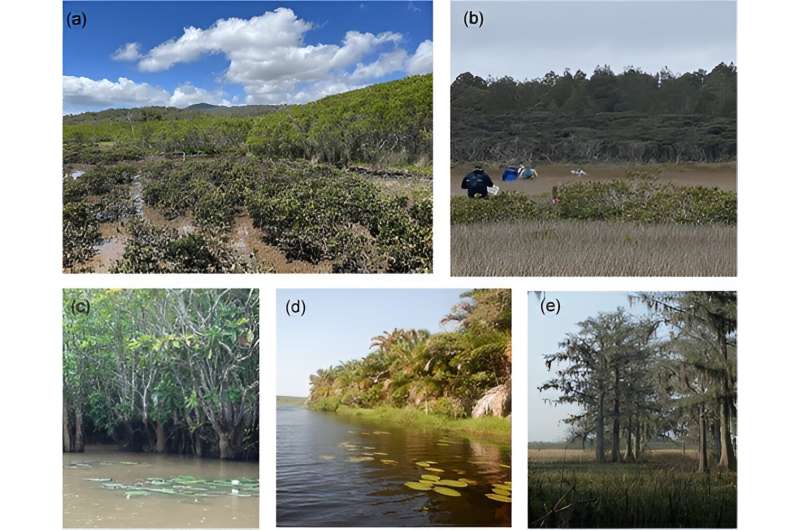This article has been reviewed according to Science X's editorial process and policies. Editors have highlighted the following attributes while ensuring the content's credibility:
fact-checked
peer-reviewed publication
trusted source
proofread
Alternative tidal wetlands in plain sight have overlooked Blue Carbon superstars

Blue Carbon projects are expanding globally; however, demand for credits outweighs the available credits for purchase.
Currently, only three types of wetlands are considered Blue Carbon ecosystems: mangroves, saltmarsh and seagrass.
However, other tidal wetlands also comply with the characteristics of what is considered Blue Carbon, such as tidal freshwater wetlands, transitional forests and brackish marshes.
In a new study appearing in BioScience, scientists from Australia, Indonesia, Singapore, South Africa, Vietnam, the US and Mexico have highlighted the increasing opportunities for Blue Carbon projects for the conservation, restoration and improved management of highly threatened wetlands.
Led by Griffith University's Dr. Fernanda Adame, from the Australian Rivers Institute, the team compiled information on the biophysical characteristics of various tidal wetlands and their managing potential, and concluded that all wetlands below the highest astronomical tide, directly or indirectly influenced by tides, should be classified as blue carbon ecosystems.
"By recognizing and prioritizing their protection and restoration, we can unlock myriad benefits, including biodiversity conservation," she said. "Our research provides compelling evidence that tidal wetlands, beyond mangroves, saltmarshes, and seagrass, exhibit characteristics aligned with Blue Carbon. These ecosystems store significant amounts of carbon dioxide in their soils and aboveground biomass, while emitting low levels of greenhouse gases."
Blue carbon projects, centered around the management of mangroves, saltmarshes, and seagrass, have garnered attention for their ability to enhance carbon sequestration and reduce greenhouse gas emissions. Coastal wetlands in particular have emerged as critical players in the fight against climate change, offering promising opportunities to mitigate atmospheric greenhouse gases.
"By managing these ecosystems strategically, not only can we reduce curb emissions, but we can also make significant strides towards achieving the United Nations Sustainable Development Goals," Dr. Adame said. "By incorporating all tidal wetlands into blue carbon initiatives, we can maximize their potential as carbon sinks and fortify our efforts in combating climate change. This inclusive approach not only safeguards our environment but also offers opportunities for sustainable development and conservation."
More information: Maria Fernanda Adame et al, All tidal wetlands are Blue Carbon ecosystems, BioScience (2024). DOI: 10.1093/biosci/biae007
Journal information: BioScience
Provided by American Institute of Biological Sciences




















